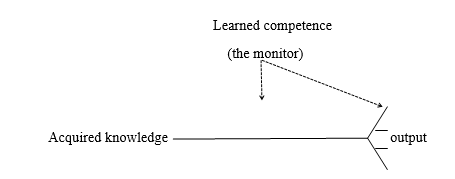Chapter 11
 11.4 Explaining second language acquisition
11.4 Explaining second language acquisition
I. Brainstorming
This section surveys the theories that account for second language acquisition. How does language acquisition take place?
II. Explaining SLA
Mentalist theories
Mentalist theories are those that attempt to explain acquisition on the basis of assuming an innate biological endowment that makes learning possible.
Chomsky: LAD system (Language Acquisition Device): there is a language acquisition device (LAD) in human brain.
Krashen: Monitor Theory
The theory was put forward in the form of five hypotheses: the Acquisition-Learning Distinction, Natural Order, Monitor, Input and Affective Filter.
Acquisition occurs subconsciously as a result of participation in natural L2 communication. Learning is the result of conscious study of the formal system of the language.
Acquired knowledge serves as the source for automatic production of speech, whereas learnt knowledge is available for use only in monitoring linguistic production.

Gass distinguishes input from intake. Input is the first step of acquisition—a passing through of the initial data. Not all noticed input is comprehended and not all comprehended input becomes intake. Intake is seen as “a process which mediates between target language input and the learner’s internalized set of rules”.
Functionalist explanation of SLA
Functionalist theories hold that experience is of more importance than innate devices in learning a second language.
Brown
Acculturation is the process of adjusting and adapting to a new culture. Acculturation is determined by the degree of social and psychological distance between the learner and the target language culture.
Halliday
Language acquisition takes place in the process of learning to communicate.
Ellis
The basic premise of a neurofunctional view of SLA is that there is a connection between language function and the neural anatomy. The difference between this view and a nativist theory lies in the assumption that there is no single “black box” for language in the brain. Neurofunctional accounts of SLA recognize the contribution of both the left and the right hemispheres of the brain.
